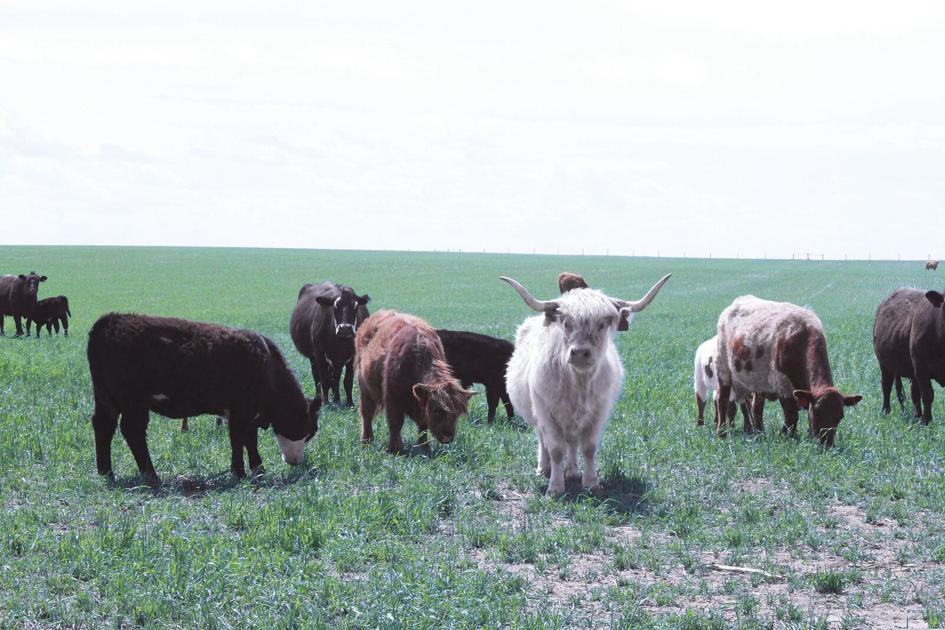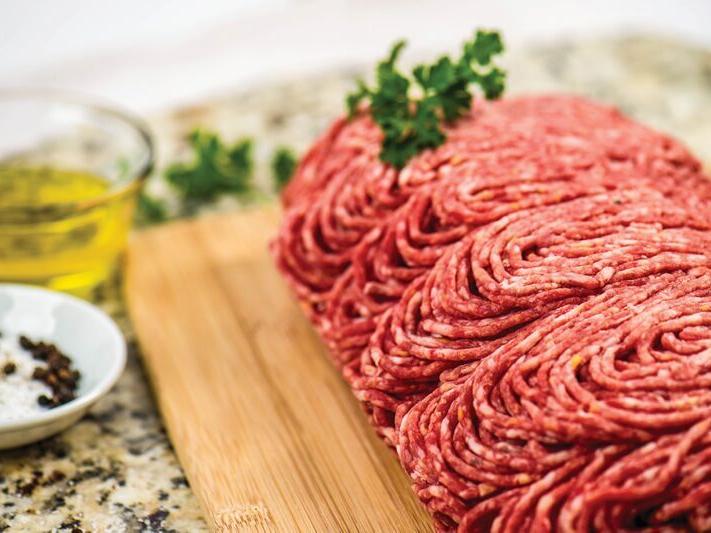
“Beef...It’s What’s For Dinner.” My guess is you heard Sam Elliot’s voice as you read those words! That phrase, and that voice, has been the slogan used by the beef industry since 1992, when the ad campaign was launched by the National Livestock and Meat Board.
There has been some controversy in recent years concerning the diet of most Americans, in particular the consumption of red meat such as beef and the health risks that may result. However, many studies show that beef has excellent health benefits and like about anything else should be consumed in moderation.
“Calorie for calorie, beef is one of the most nutrient-rich foods,” says Shalene McNeil, PhD, executive director of nutrition research for the National Cattlemen’s Beef Association. “One 3-ounce serving of lean beef contributes only 180 calories, but you get 10 essential nutrients.”
One thing many consumers may not be aware of, especially those who live in the metropolitan areas, is the differences in quality and flavor of beef based on the processing, how the animal was raised, and even the breed of the animal. Kerry Maline has been in the farming and ranching business all his life, and over the years he has developed a fondness for a particular breed of beef that is not real common around here - Highland.
Kerry and his wife, Shane, now reside on the home place where he grew up. He said when he left the farm after high school he had made the decision not to go into farming. “When I came back in 2013 I wasn’t necessarily expecting to do that. That’s about the same time we got into the Highland cattle,” he said.
The couple was married in September of that year, and in December they leased a group of Highland cattle and then bought some as well. “And that’s when we got into direct market beef.”
For those, like me, who aren’t sure what direct market beef means, Kerry explained the process. “Essentially it means we take care of taking it to the processor, have it packaged and tell them how to cut it up, then we sell it directly to the customer. Maybe they just want a few steaks or they want a quarter or a whole beef. Then we cut it up however they want and deliver it to them,” he said. “It’s very non-traditional.”
Kerry said he has several customers who prefer Highland beef over any other cattle breed. While the ranch has specialized in purebred Highland for several years, he said they are progressing on that. “It’s just not really profitable to sell purebred Highland as direct market beef. So we’re going with more crossbreds. We can cross a Highland with an Angus and have it ready probably eight months sooner and the hanging weight could be as much as 80 pounds heavier. Obviously we are not going to have every characteristic of a Highland, but we retain a lot. We’re just feeling like that’s the best compromise to give us a chance of having an affordable product.”
Kerry said he developed an interest in direct market beef before he returned to the farm, and when the decision had been made to move back he began investigating various breeds of cattle that he was interested in. “I had been interested in alternative beef for a while, and I answered an ad on Craig’s List that happened to have Highlands, so that’s how we got into it,” he explained.
Highlands have become quite popular recently, and Kerry said he has been selling some of his purebreds while they are most valuable. “We have collected semen out of two bulls that we’ve had, so we can AI and still get our crossbred beef,” Kerry said. “But I don’t think we will get rid of all our Highlands; every time we sell one we both struggle a little bit.”
He explained that different cattle breeds also have different characteristics and personality traits. He gave an example. “If somebody new steps out of a vehicle around a Highland, they are on guard. They seem to have a heightened sense of a stranger and watch closely.”
The meat from the Highland cattle is also a little different according to Kerry. “While we haven’t had it tested, I’ll bet our hamburger would be comparable to 93% lean hamburger. Highlands rarely put fat on so the meat is much leaner. But that doesn’t mean it’s not juicy, or that there isn’t natural marbling throughout the meat. It still has the flavor and the tenderness that people are looking for. It’s not unusual to have somebody tell us this is the best beef they’ve ever had.”
As far as any difference in flavor from one breed to another, Kerry said unless someone is very sensitive to taste they are probably not going to notice any difference. “Part of the reason our beef tastes better is how it’s hung. We have it hang for 14 days. That process of allowing the meat to break down tenderizes the meat and really helps on the flavor.”
He said there are challenges with maintaining a direct market beef program. “If you’re trying to do that and not fattening other animals at the same time there is no efficiency. It takes a certain amount of time to stop your day and go do chores, whether you are feeding 13 head or 100 head. The most efficient way to feed an animal is with ground hay, silage, obviously your grain distillers. But unless you have a large number of head most of those things outside are going to spoil and you’re going to ruin a lot of feed.”
In an effort to become more efficient and lower feed costs, Kerry said he is experimenting with various cover crops. “My goal is to graze them with the right cover crop mix and get the same rate of gain without having to start a machine or pay for certain things to be done. The only issue I have is whether I can graze it before it gets mature and loses its value. So those are experimentations that I’m still working at tweaking.”
Kerry said that while he uses most of the same practices most cattle producers use, he uses natural proteins and no hormones. “It’s rare that I give an antibiotic, but if they need it I’m going to give it to them. But there are certain things I do that fit the all natural protocol. I don’t give hormones - and that is the biggest question that I get asked,” Kerry said.
For consumers looking for just a few steaks or roasts Kerry said they generally have that available. Those looking to purchase larger quantities, such as a quarter or more, may have to wait a while. “We are going to try to focus on butchering once a year,” said Kerry. “Part of the issue is you almost can’t get into a local processor. I’ve got animals here that I’m not sure where some of them are going to go. There are no available places in a USDA place in 2021 that I know of.”
Kerry said it is his experience that once people get a taste of beef that is hung and processed properly they don’t want to go back. Because of the slow growth of purebred Highlands nearly all of the direct market beef he currently sells is Highland/Angus cross. “I’m just trying to make sure it is a good quality product and makes financial sense for me. We enjoy our animals. We enjoy looking at our Highlands as much as everyone else. They are unique and a fun animal, and we enjoy the feedback we get from customers.”
The Link LonkMay 21, 2021 at 04:45AM
https://ift.tt/3u552NJ
Maline opts for non-traditional direct to market beef - Gothenburg Leader
https://ift.tt/2RxTDX4
Beef

No comments:
Post a Comment